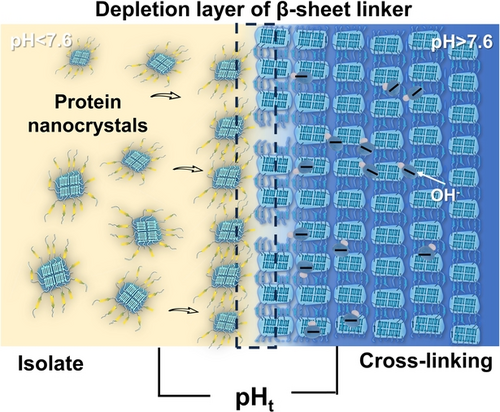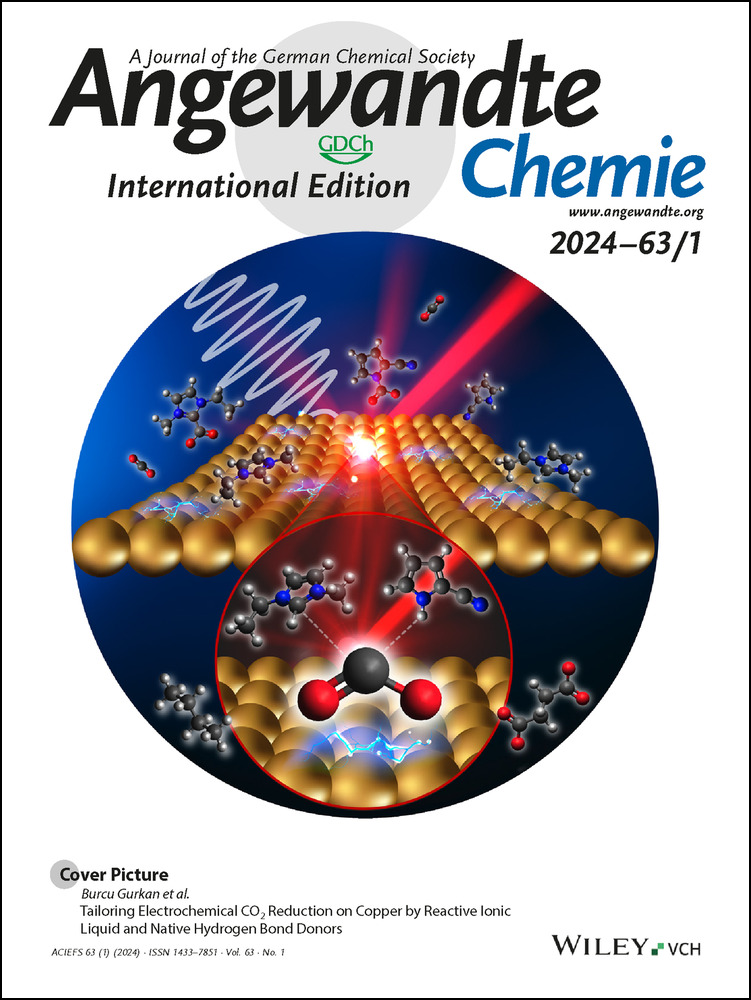pH-Responsive Protein Conformation Transistor
Graphical Abstract
The successful acquisition of “core–shell” structural protein nanocrystals that undergo ultrafast cross-linking behavior in response to pH levels above 7.6 illustrate the concept of a protein conformation proton transistor. This pH-responsive cross-linking can be conveniently achieved under near physiological conditions, highlighting the great potential in biomedicine, biosensing, and microfluidic chemistry.
Abstract
Analogous to electronic transistors, transistor-like responsive materials undergo sharp structural transitions in response to a very narrow range of microenvironment signals. This kind of material is typically limited to synthetic polymer-derived nanoscale assembly or disassembly and has profound implications for modern high-tech applications. Herein, we evolve this system from synthetic polymers to biopolymers and extend the corresponding assembly scale from the nanoscale to meso/macro-scale. We develop unique protein nanocrystals with core–shell structures through a two-step nucleation process. The protein nanocrystals exhibit exceptional transistor-like pH-responsive mesoscale assembly through the formation of inter-particle β-sheet linkers. This allows ultrasensitive cross-linking behavior, such as self-coacervation at a water/water interface, ultrafast gelation in seconds, and ultrasensitive swelling for detection of basic vapors at extremely low concentrations. This breakthrough has great promise for broader applications such as drug encapsulation and delivery, biosensing, cytomimetic materials, and microfluidic chemistry.
Open Research
Data Availability Statement
The data that support the findings of this study are available on request from the corresponding author. The data are not publicly available due to privacy or ethical restrictions.





